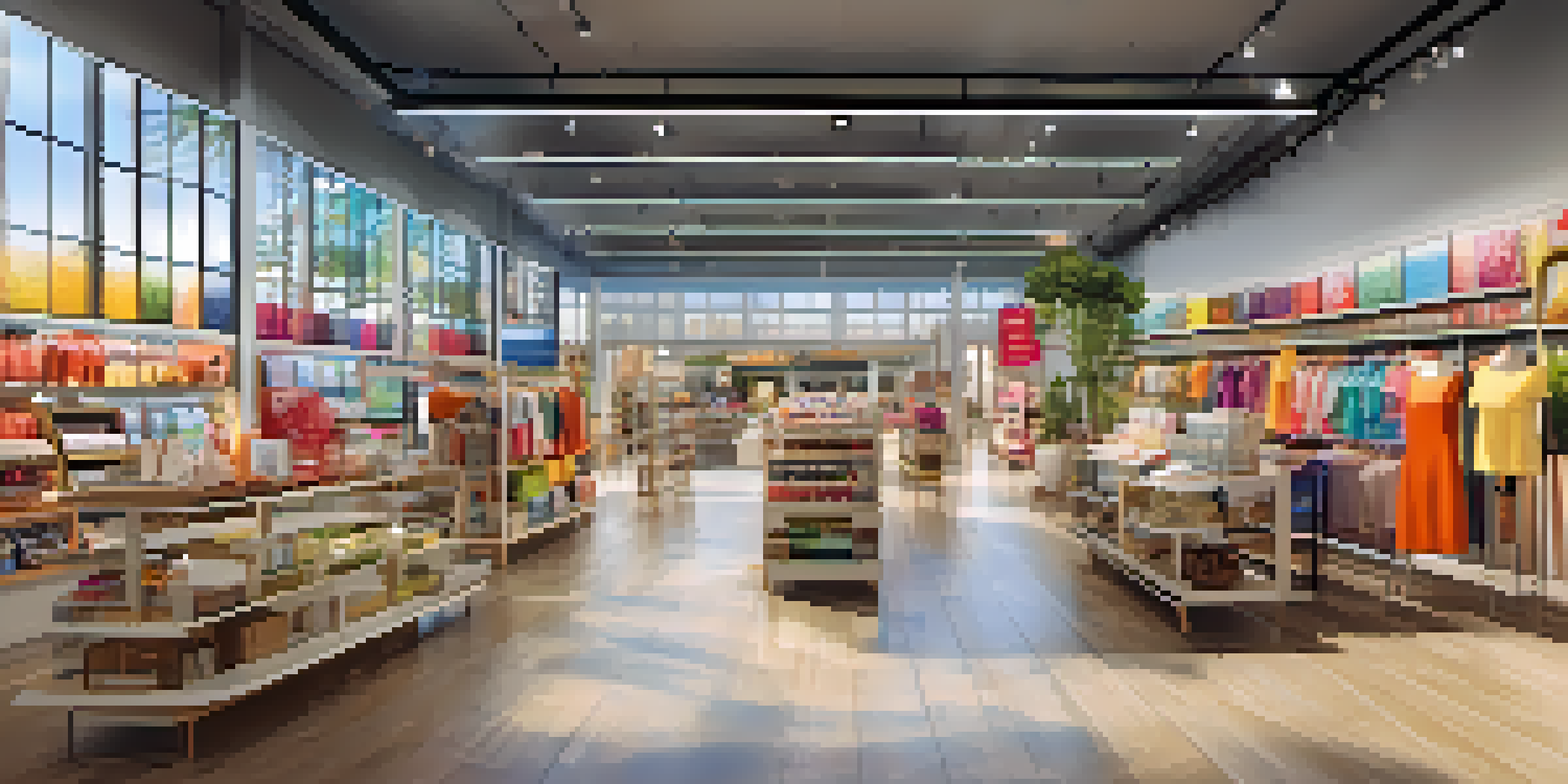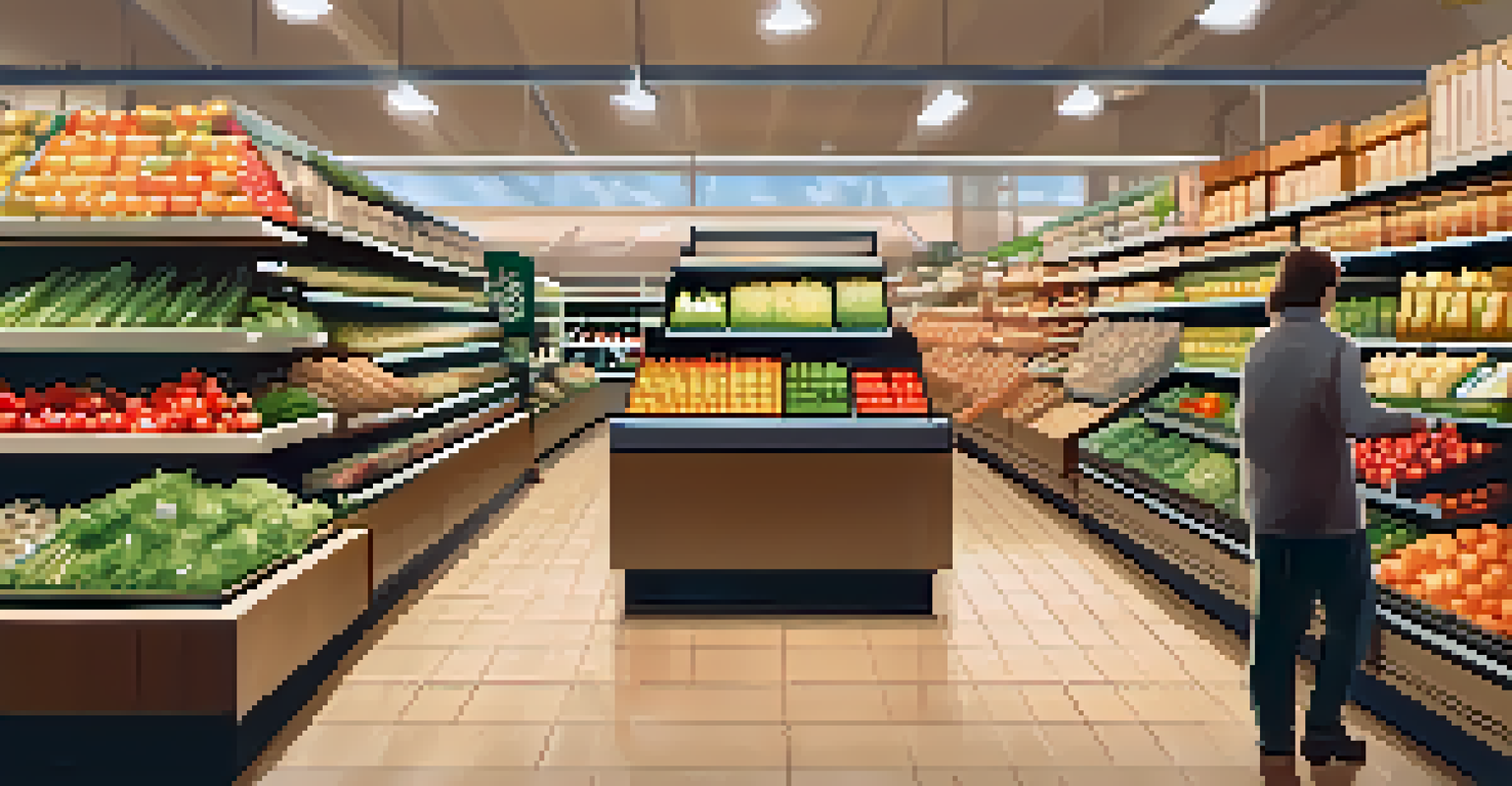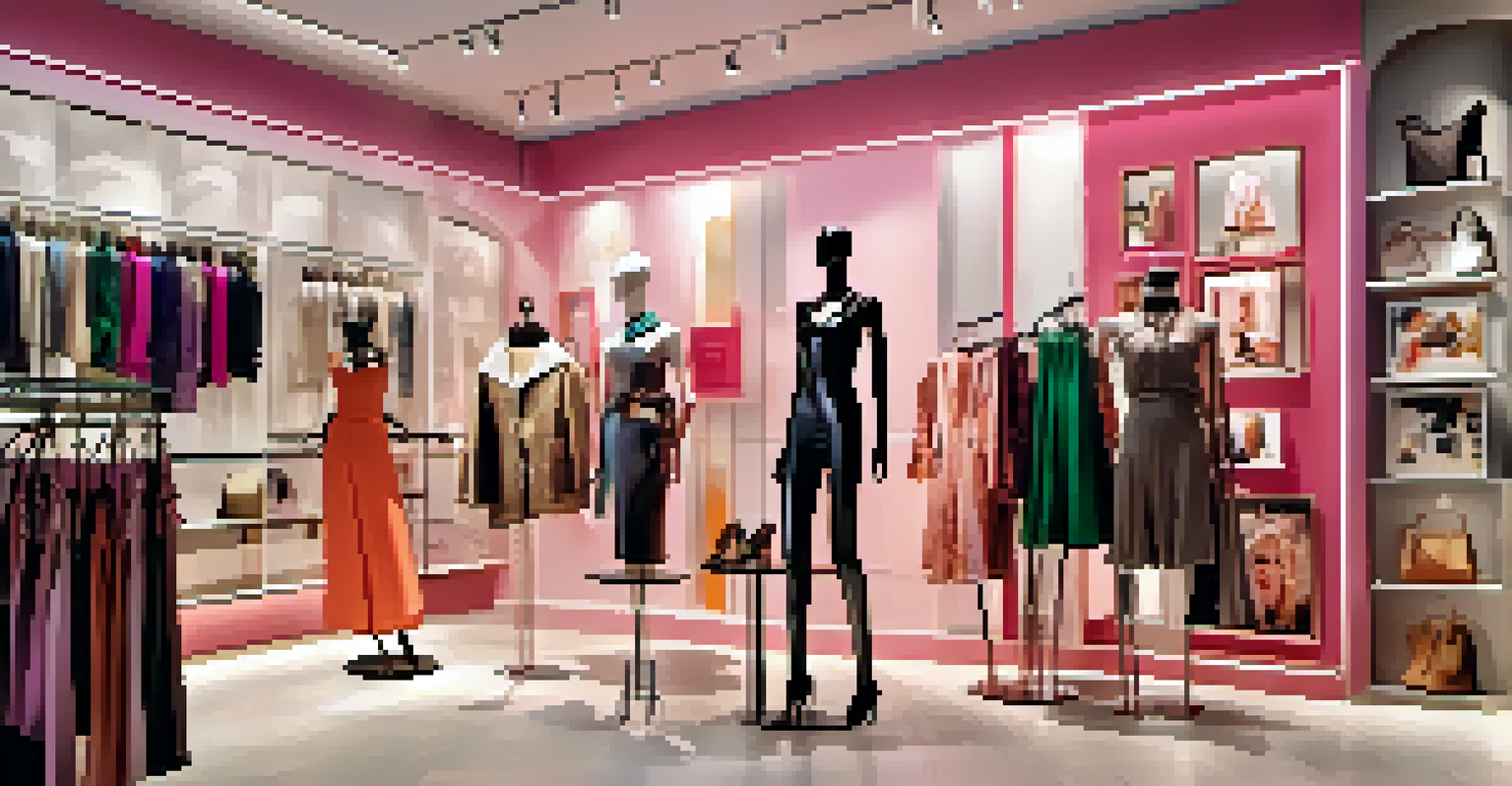Creating Compelling Store Layouts for Fashion Retail Success

Understanding the Importance of Store Layouts
Store layouts play a crucial role in shaping the customer experience. A well-thought-out layout can enhance product visibility and encourage shoppers to explore more. Consider it the first impression of your brand; it sets the tone for their entire shopping journey.
Retail is not just about selling products; it's about enhancing the customer experience at every touchpoint.
When customers walk into a store, the layout guides their path and influences their purchasing decisions. A chaotic or uninviting arrangement can lead to frustration and quick exits. On the other hand, a strategic layout can create an inviting atmosphere that encourages longer visits and increased sales.
Think of your store layout as a story waiting to be told. Each display is a plot point that should draw customers in, making them want to see what happens next. By understanding this narrative, you can create a more engaging shopping environment.
Defining Your Target Audience's Shopping Behavior
Before diving into layout design, it's important to know who your customers are. Understanding their shopping habits, preferences, and demographics can provide insights into how to best arrange your store. For instance, younger shoppers may prefer a more modern setup, while older customers might appreciate a classic, straightforward layout.

Consider using customer personas to visualize your ideal shoppers. This strategy can help you tailor your layout to meet their needs, whether they’re browsing casually or on a mission to find specific items. Knowing your audience not only informs layout decisions but also enhances customer satisfaction.
Store Layouts Shape Customer Experience
A well-designed store layout enhances product visibility and encourages customers to explore more, influencing their overall shopping journey.
For example, if your target market enjoys leisurely shopping, wide aisles and lounge areas might be beneficial. Conversely, if your customers tend to shop quickly, a more streamlined approach with clearly marked sections will cater to their needs.
Utilizing the Right Store Layout Types
There are several types of store layouts, each with its advantages. The grid layout, often seen in supermarkets, allows for efficient product placement and easy navigation. However, a more free-flowing layout might work well for fashion retailers looking to create a unique shopping experience.
The stores you create are a reflection of your brand and a canvas for your customers' experiences.
The racetrack layout guides customers through a loop, encouraging them to see all products. This approach can increase the likelihood of impulse purchases. By understanding the strengths of each layout type, you can choose the one that aligns best with your brand and goals.
Keep in mind that you can also blend different layouts to suit your space. Mixing a grid with a free-flow layout, for instance, can create an engaging yet organized shopping experience, giving customers the best of both worlds.
Creating Focal Points to Draw Attention
Focal points in a store layout are essential for guiding attention and creating visual interest. These can be achieved through strategic placement of mannequins, promotional displays, or unique decor that captures the eye. Think of focal points as the highlights in a movie, keeping customers engaged and eager to discover more.
For example, placing a striking display at the entrance can entice customers to step inside. Similarly, using bold colors or lighting in specific areas can draw attention to new arrivals or seasonal collections. These elements not only attract shoppers but also enhance their overall experience.
Understanding Your Audience Matters
Knowing your target audience's shopping behavior helps tailor the store layout to meet their needs, improving customer satisfaction.
Remember, the key is to create a balance. Too many focal points can lead to visual clutter, making it hard for customers to focus. Instead, strategically select a few standout displays that can effectively showcase your brand's identity.
Incorporating Effective Traffic Flow Strategies
Traffic flow refers to how customers move through your store. A well-planned flow can make shopping more enjoyable and efficient, leading to increased sales. Consider how the layout directs customers from one area to another, gently guiding them along their shopping journey.
Utilizing wide pathways and clear signage can help reduce congestion and confusion, allowing shoppers to navigate easily. Think of it like a well-organized highway; clear lanes and directions keep traffic moving smoothly. This not only enhances the shopping experience but also encourages customers to spend more time in-store.
Moreover, paying attention to the placement of checkout areas is crucial. Ideally, these should be located at the end of the shopping journey, encouraging customers to browse as they approach the register. This simple strategy can help boost impulse purchases and increase overall sales.
Designing an Inviting Environment with Lighting and Colors
Lighting and color choices can significantly influence the atmosphere of your store. Warm lighting can create a cozy ambiance, while bright, cool lights can evoke a modern, energetic feel. The right lighting not only enhances product visibility but also sets the mood for your brand.
Similarly, colors can evoke emotions and impact shopping behavior. For example, blues and greens are often associated with calmness and trust, while vibrant reds and yellows can stimulate excitement and urgency. By thoughtfully incorporating colors and lighting, you can create an environment that resonates with your audience.
Utilizing Technology for Engagement
Integrating technology into your store layout can enhance customer engagement and streamline the shopping experience.
Don’t forget about the importance of natural light, if possible. Incorporating windows or skylights can make your space feel more inviting and spacious. People often feel more comfortable in bright, airy environments, which can lead to longer shopping visits and increased sales.
Using Technology to Enhance the Shopping Experience
In today’s digital age, integrating technology into your store layout can provide a competitive edge. Digital displays, interactive kiosks, and mobile apps can enhance customer engagement and make shopping more convenient. Think of technology as a helpful assistant that guides customers through their shopping journey.
For instance, using QR codes on displays can provide additional product information or special offers, making shopping more informative. Additionally, incorporating virtual fitting rooms can help customers visualize how items will look without trying them on. This innovative approach can reduce barriers to purchase and improve customer satisfaction.

However, it’s important to strike a balance. Too much technology can overwhelm customers, so be sure to integrate it thoughtfully within your layout. The goal is to enhance the shopping experience, not complicate it.